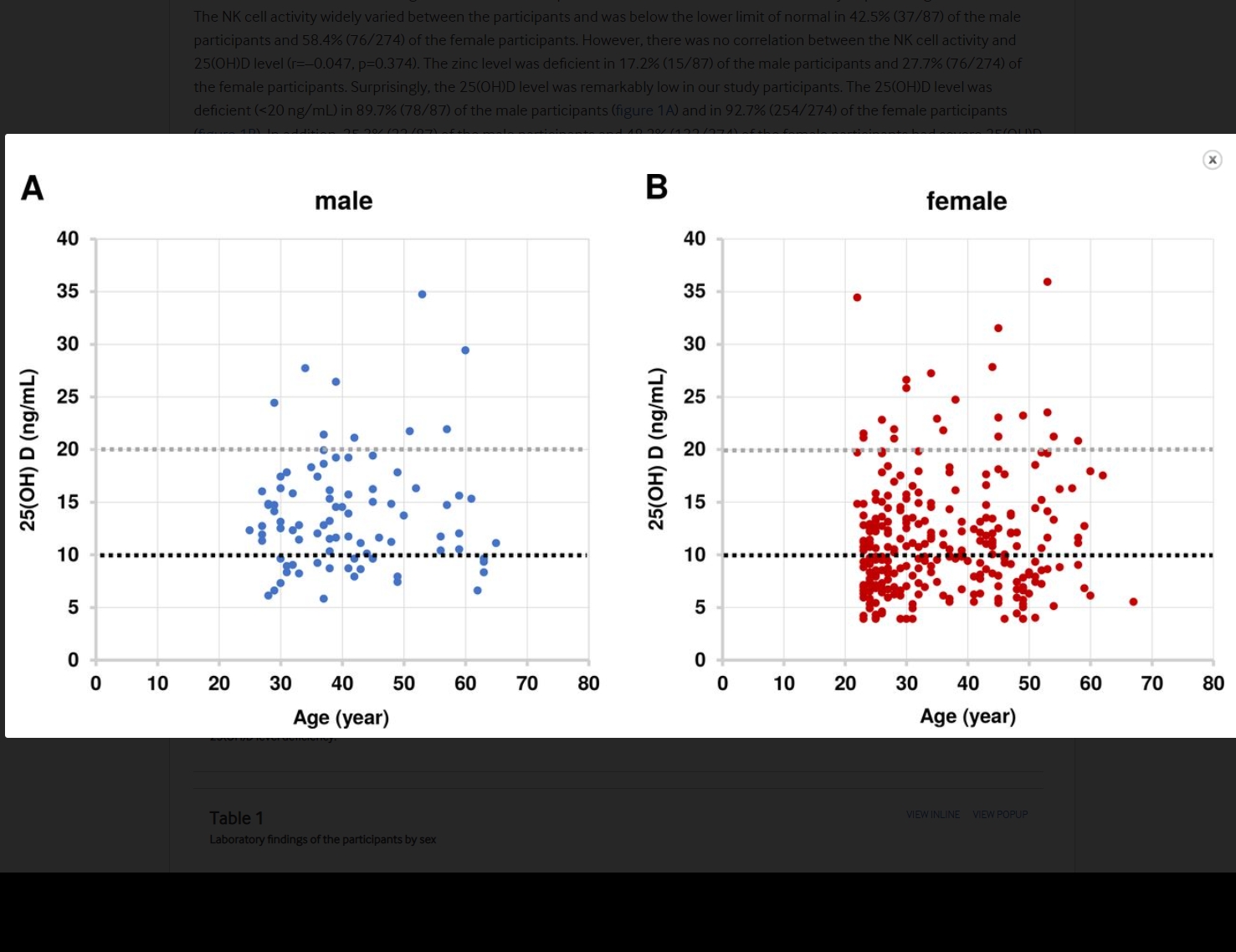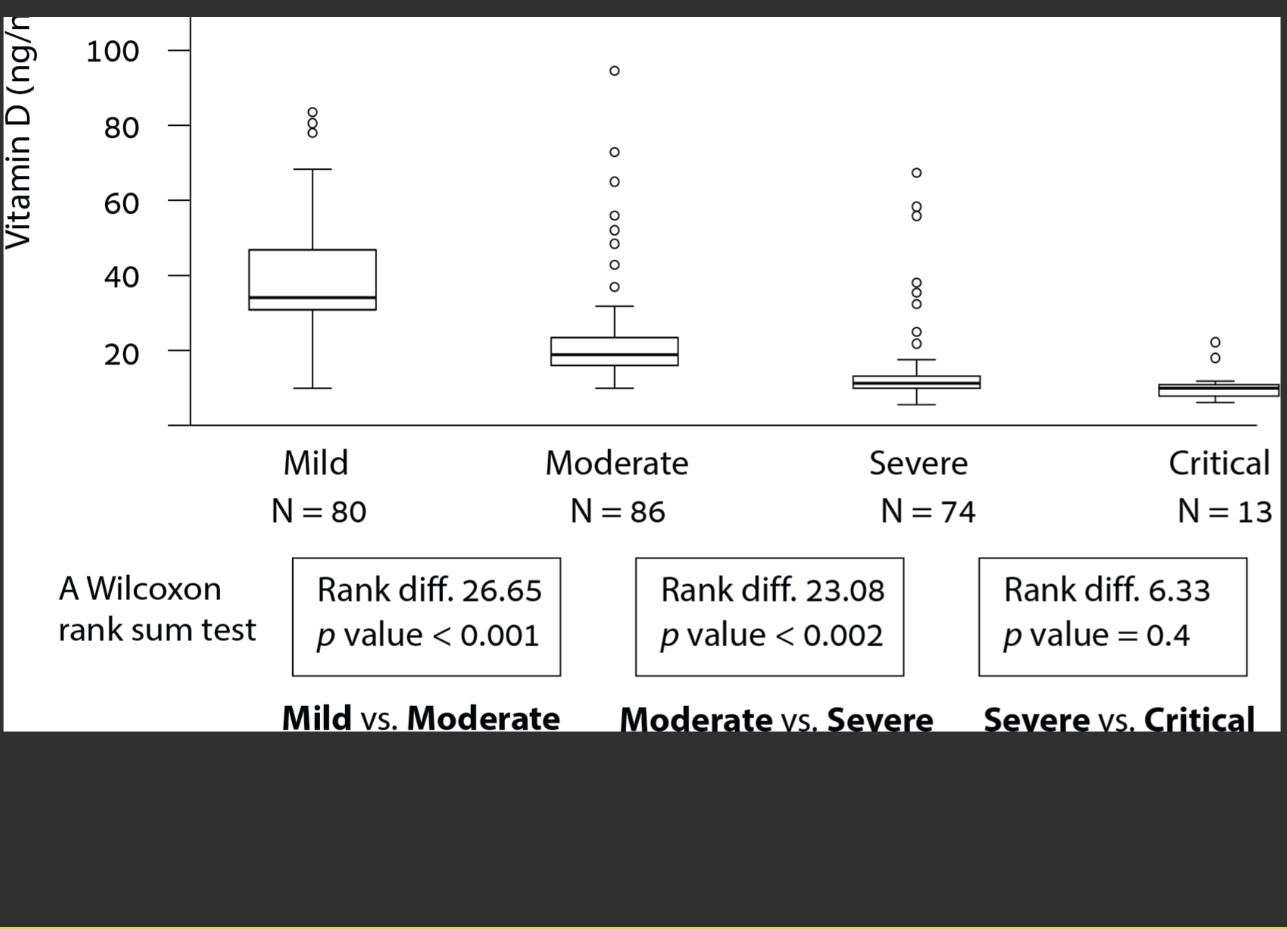Vitamin D Intake May Reduce SARS-CoV-2 Infection Morbidity in Health Care Workers
by Tatiana L. Karonova Nutrients 2022, 14(3), 505;
In the last 2 years, observational studies have shown that a low 25-hydroxyvitamin D (25(OH)D) level affected the severity of infection with the novel coronavirus (COVID-19). This study aimed to analyze the potential effect of vitamin D supplementation in reducing SARS-CoV-2 infection morbidity and severity in health care workers. Of 128 health care workers, 91 (consisting of 38 medical doctors (42%), 38 nurses (42%), and 15 medical attendants (16%)) were randomized into two groups receiving vitamin D supplementation. Participants of group I (n = 45) received water-soluble cholecalciferol at a dose of 50,000 IU/week for 2 consecutive weeks, followed by 5000 IU/day for the rest of the study. Participants of group II (n = 46) received water-soluble cholecalciferol at a dose of 2000 IU/day. For both groups, treatment lasted 3 months.
Baseline serum 25(OH)D level in health care workers varied from 3.0 to 65.1 ng/mL (median, 17.7 (interquartile range, 12.2; 24.7) ng/mL). Vitamin D deficiency, insufficiency, and normal vitamin D status were diagnosed in 60%, 30%, and 10%, respectively. Only 78 subjects completed the study. Vitamin D supplementation was associated with an increase in serum 25(OH)D level, but only intake of 5000 IU/day was accompanied by normalization of serum 25(OH)D level, which occurred in 53% of cases. Neither vitamin D intake nor vitamin D deficiency/insufficiency were associated with a decrease in SARS-CoV-2 morbidity (odds ratio = 2.27; 95% confidence interval, 0.72 to 7.12). However, subjects receiving high-dose vitamin D had only asymptomatic SARS-CoV-2 in 10 (26%) cases; at the same time, participants who received 2000 IU/day showed twice as many SARS-CoV-2 cases, with mild clinical features in half of them.















